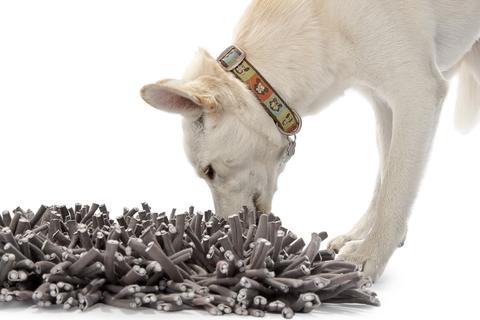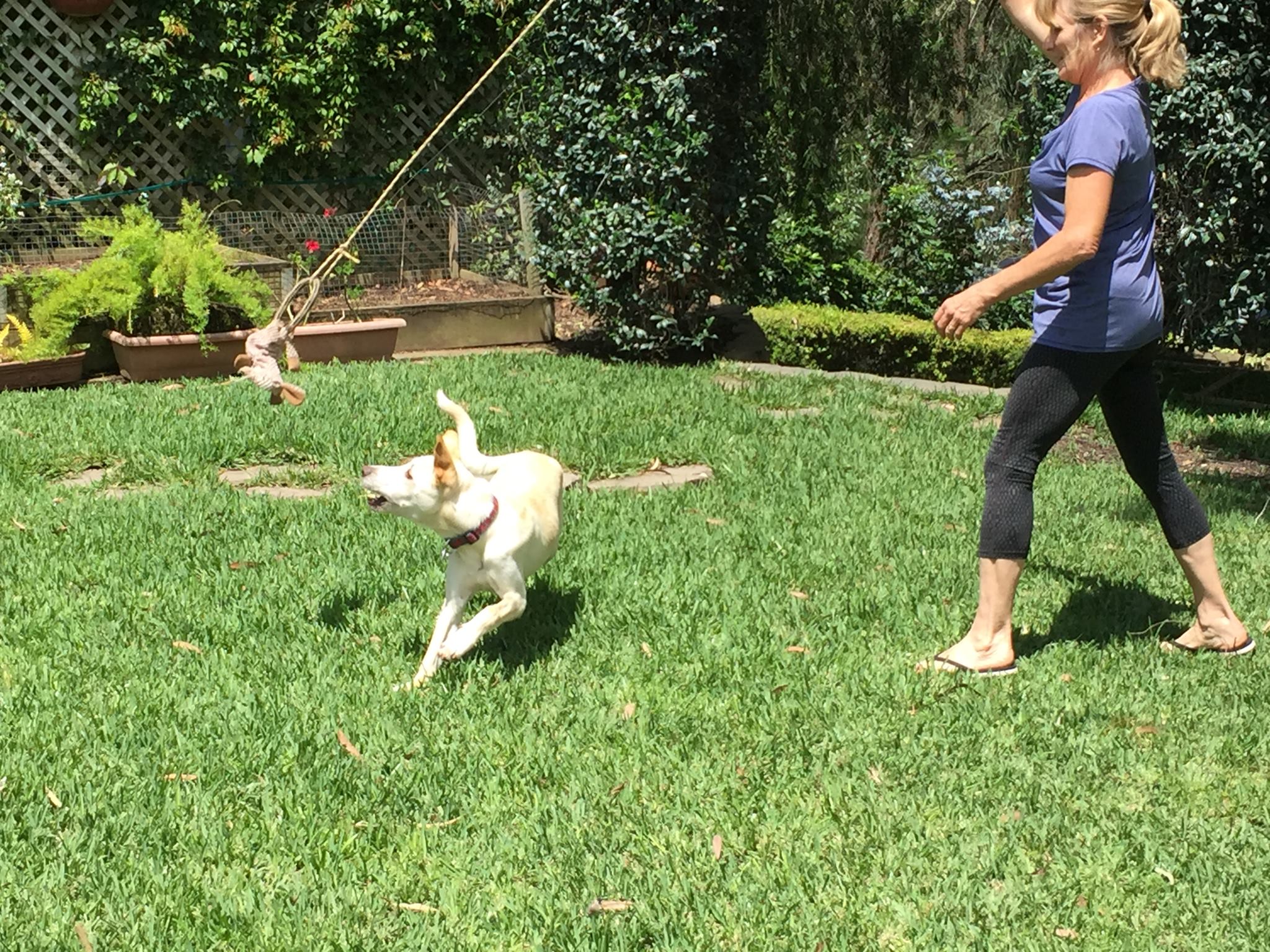“What kind of games does your dog like to play with you.”
Before I became a dog trainer myself, I’d hired a trainer to help me with a dog who had stranger danger. When she asked me that, I didn’t know how to answer.
He played with my other dogs. But he didn’t play fetch. He didn’t play tug. I hadn’t really given it much thought.
She had me grab a stuffy and I made it “come alive” by dragging it around the floor. He pounced on it.
My dog…thought that was fun!
Though I had dogs from the time I was born into my adulthood, this was curiously a topic I’d not considered.
Ways to make your dog happier
Being a dog can be pretty boring. You wake up in the house. You go to sleep in the house. In between, if you’re lucky, you might get a walk. And if you’re even luckier, your owner might let you have a good sniff. For most family dogs, that’s as good as it gets.
The woman who asked me about my own dog, used to work with zoo animals, where enrichment is crucial to the animal’s physical and mental well being.
But it turns out, it’s also so important for our dogs to be mentally and behaviorally sound.
Dogs that don’t live in people’s homes, are scavengers and sometimes hunters. Food isn’t delivered. They need to work to eat. And there are many ways to get your dog working for food even in your home. Let’s check out some of them!
1. Train with food
- Since we use food for training, you could have all of your dog’s food consumed during training sessions. Though most people don’t want to spend that much time training their dog! (But if your dog is overweight, cutting back on regular rations so you can use calories for food, can work well.)
2. Ditch the food bowl
- There are slow feeder bowls for small dogs and big dogs. While they may only slow down a dog a wee bit, they are still a better choice than a flat bowl.
3. Let your dog scavenge
- Snuffle mats are a way for you dog to have the experience of foraging, but you can also just sprinkle their food or even treats, outside in the grass and let them sniff around to find them. If you’re crafty, you can also make your own.

4. Dogs like puzzles that require thinking
- There are puzzle feeders involve nosing things out of the way to get to the food or pressing levers. Once a dog figures these out, it only takes seconds. I like them for foster dogs though.
5. Dogs like puzzles that require moving things
- Other puzzle feeders take more work, like this one by Starmark that requires the dog to tip over an object that wants to stay upright.
6. Many dogs like to lick
- Some dogs really enjoy licking stuff. Lickimat makes a wonderful product. You can smear peanut butter or cream cheese inside. This isn’t great for heavy chewers but it can help many dogs with crate training and even bath time. You can also use rubber pot holders. IKEA has some for around $5 with room for a carabiner clip. All of my dog’s crates have some sort of Likimat installed.
7. Don’t forget the classics
- Many dogs like fetch or tug of war (big dogs) (small dogs). Some people are afraid to let their dog do tug, but if you follow the rules, all will be fine.
8. Dissecting stuffed toys
- This one can upset owners. They don’t understand why their dog unstuffs their brand new toys. This behavior is a bit of leftover “software” from when dogs had to hunt to earn their living and would dissect their prey in order to eat it. If your dog likes to do this, it’s wonderful enrichment even if it can be messy for the humans. I buy $1 toys at the thrift shop and distribute them a few times a week. I put them away for a few days and redistribute the same ones and it’s like kids at Christmas. I can get quite a few uses out of each toy.
9. Chasing is also related to play predation
- Flirt poles are another fun way for dogs to practice play predation. You can drag the stick around to imitate prey and the dog will jump at it.
10. Let dogs use their nose
- We don’t let dogs sniff nearly enough. We can play a lot of games to help them enjoy using their nose. check out this book on scent games!
As an Amazon Associate I earn from qualifying purchases.
This list is far from complete and there will be more blog posts on enrichment!
If your dog has behavior issues and you’re in the greater Sacramento area and need help, sign up for your free 15 minute phone consultation.

My dog loves having a treat rolled up in an envelope, box, anything to forage for it. we don’t need to keep inventing more stuff and spending to keep our dogs entertained. Be inventive !
Absolutely! You don’t need to buy anything to give your dog more enrichment!